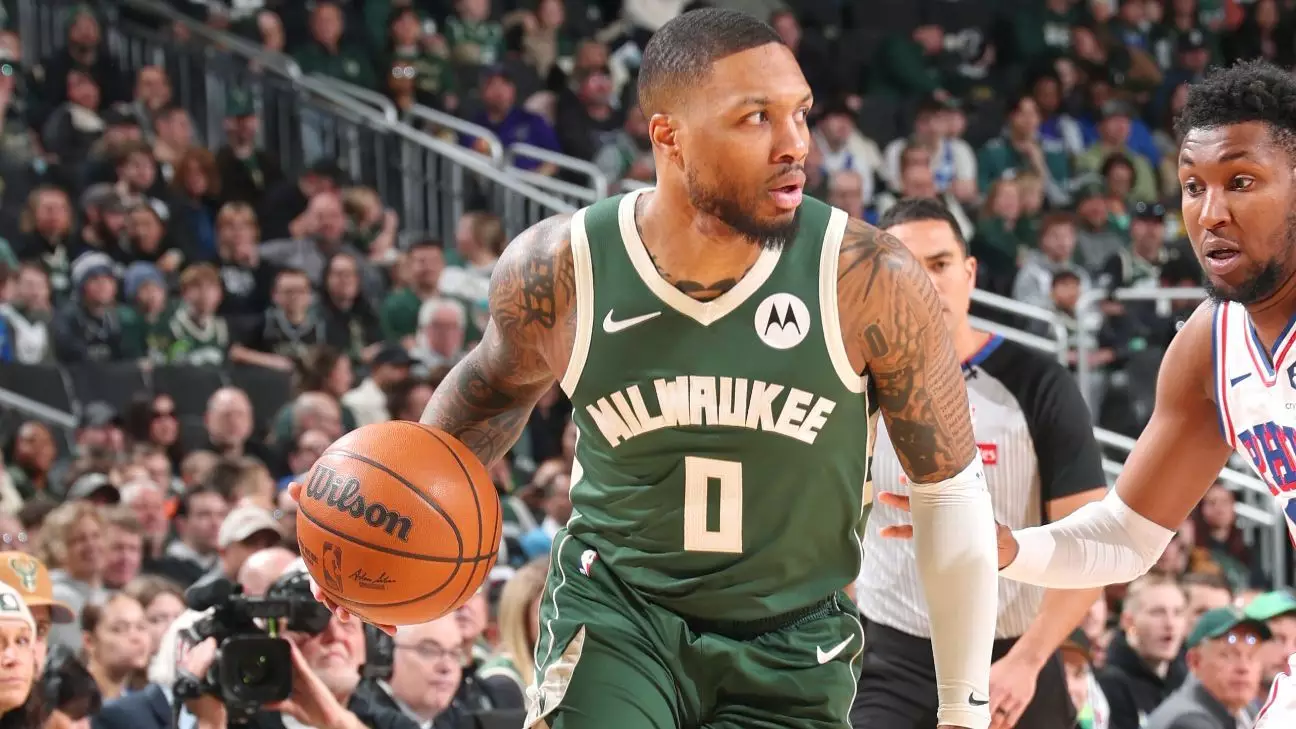The Milwaukee Bucks find themselves in a precarious situation as the NBA playoffs loom. With the opening game just around the corner, their star player, Damian Lillard, is sidelined due to a serious health issue—a blood clot in his right calf. This condition, known medically as deep vein thrombosis, has rendered him absent from the court since March 18, hampering not just his well-being but also the Bucks’ chances for a deep playoff run. While the team remains optimistic about Lillard’s recovery, the uncertainty regarding his availability casts a long shadow over their playoff aspirations.
Progress Amidst Caution
Recent updates reveal a silver lining; reports indicate Lillard’s condition is gradually improving, with indications that the blood clot is diminishing. This development has led to a glimmer of hope for both Lillard and the Bucks. Team officials, including general manager Jon Horst, have emphasized that Lillard’s health is paramount. Despite the positive updates, the coaching staff is well aware of the strict protocols that must be followed to ensure a safe return. The fact that Lillard is able to begin increasing his basketball activity is encouraging but emphasizes the need for cautious optimism. After all, returning to form post-injury is as much a mental challenge as it is physical.
Team Dynamics Without Lillard
The Bucks have managed to hold their ground in Lillard’s absence, concluding the regular season with an impressive record of 10-4 during the final stretch of games. However, the reality is that playing without such an influential player alters the team dynamic significantly. Lillard was averaging nearly 25 points and 7 assists per game prior to his injury, statistics that speak volumes about his impact. Coach Doc Rivers has voiced both hope for Lillard’s return and the team’s readiness to adapt, although he acknowledges the inherent difficulties of playing long-term without such a pivotal figure. It raises questions about the Bucks’ identity—is their success sustainable without Lillard’s prolific scoring and playmaking abilities?
The Broader Implications for the NBA Landscape
The situation also invites wider discussions surrounding player health and the increasing concerns about serious medical conditions in elite sports. Lillard’s case highlights a crucial aspect of modern athletics: the pressure to perform vs. the need to prioritize health. As teams navigate the challenging landscape of injuries and health protocols, fans and analysts alike are left pondering the implications for not just the Bucks, but the entire NBA. Would the Bucks still be considered championship contenders if Lillard cannot return, and what does that mean for a league that thrives on star power?
Looking Ahead
While the Bucks will step onto the court for their playoff debut against the Indiana Pacers, the narrative of their journey hinges significantly on Lillard’s recovery. The questions pulsate: Will he make a triumphant return? How will the team respond in his continued absence? As the playoffs progress, the Milwaukee Bucks must grapple with the dual realities of resilience amid uncertainty, latent potential waiting to be unleashed, and the haunting possibility of what could have been. The basketball world is watching, holding its breath.

